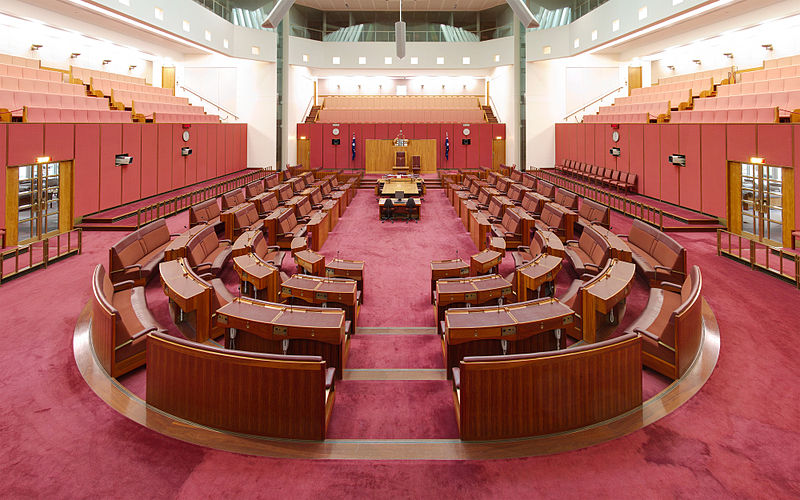The Two Territories
Unlike the states, each of the territories is represented by two senators. This means that for a senator to be elected in the ACT or NT, they need significantly more of the vote compared to senators standing for election in the states. Territory senators require approximately 33% of the first party vote to achieve a quota.
These senators face re-election approximately every three years (at the same time as the House of Representatives elections) in contrast to their state counterparts who typically face re-election every six years.
A quick history lesson – the territories did not always have Senate representation, with the Australian Capital Territory and the Northern Territory previously represented in the Senate by New South Wales and South Australia respectively.
This changed in 1975, when the Senate Representation Act was amended to give the ACT and the NT the right to Senate representation, albeit in reduced numbers.
Since the right to representation was granted to the territories, they have always been represented by one Labor senator and one Liberal/Country Liberal senator.
This is unlikely to change as the Labor Party and the Liberal Party achieved a quota at the last federal election in both Territories on first preference votes alone.
Australian Capital Territory
At the 2016 election, the Ms Katy Gallagher (Labor) and Senator the Hon Zed Seselja (Liberal) were re-elected as Senators for the ACT.
However, Ms Gallagher was caught up in last year’s citizenship debacle and was found ineligible to sit in the Parliament. When she stood down, she was replaced by Senator David Smith.
She has since rectified these issues and is once again standing as the lead ACT Labor Senate candidate at this year’s election. With her likely victory, she will reclaim her Senate position from Senator David Smith, who will be contesting the newly formed lower house seat of Bean in Canberra’s south.
In contrast to the Labor Party, who easily achieve the required number of votes on first preferences alone, the Liberal Party pass the required quota, but with less of a margin than Labor. This has created the long held belief that if the Liberal Party were to lose a few percentage points of their first preference vote, the second Senate seat in the ACT would come into play.
However, in practice, this phenomenon has not come to pass, with the Liberals consistently achieving above the number of required votes. This has not stopped Unions ACT from launching another large-scale campaign against Senator the Hon Zed Seselja, with the hope that it will place significant pressure on the up-and-coming Senator.
As history shows, though there will be concerned attempts to destabilise Senator Seselja’s position, the likely result will see him, and the Liberal Party, retain their position in the Senate.
Our call: a return to the Senate by Katy Gallagher and Senator the Hon Zed Seselja to retain his senate position.
Northern Territory
At the 2016 election, Senator Malarndirri McCarthy and Senator the Hon Nigel Scullion were the elected senators in the NT.
The Northern Territory Senate race appears to be straightforward, as there is no credible third party running and both a Labor Party and a Country Liberal Party senator representing the Northern Territory since 1975, when senators for the territories were introduced.
Our call: Unless a celebrity candidate standing for a minor party or as an independent nominates before 23 April, we’re predicting Senator Malarndirri McCarthy (Labor) will retain her Senate position, while Mr Sam McMahon (Country Liberal Party) will succeed Senator the Hon Nigel Scullion, who announced he will be retiring at this election.
Latest posts by Nexus APAC (see all)
- United Kingdom General Election 2024: An Overview - April 15, 2024
- Australian Voters Go to the Polls - February 26, 2024
- Secretaries of Federal Departments – An Overview - February 1, 2024



